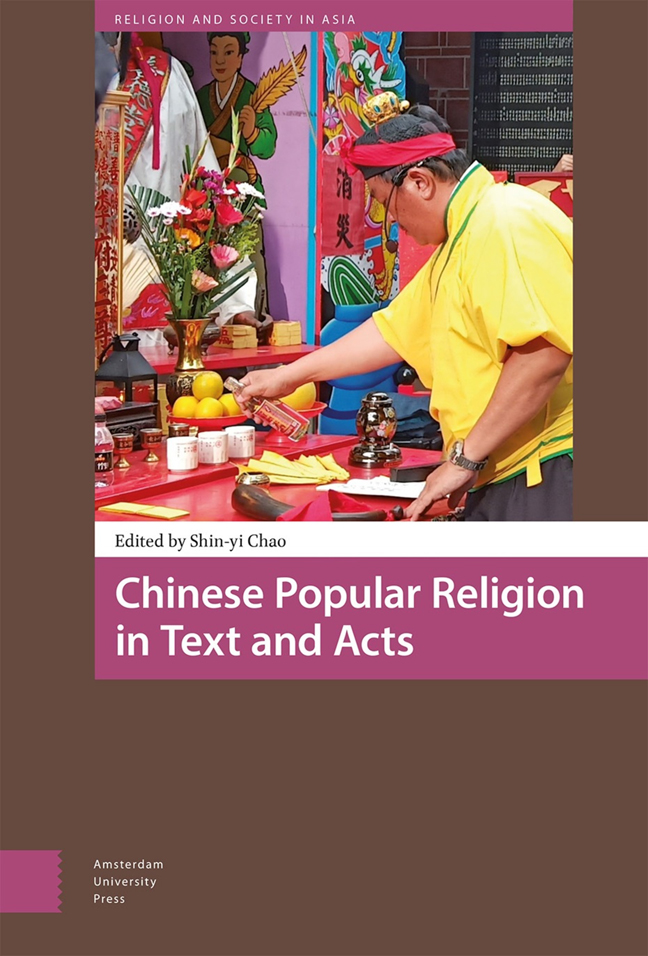Book contents
- Frontmatter
- Contents
- List of Figures and Tables
- Acknowledgements
- Dedication
- Introduction: Text, Acts, and Traditionalization: Performing Chinese Popular Religion
- Section One Texts And Acts
- Section Two Scriptures and Rituals
- Section Three Saints’ Legends and Gods’ Lore
- Section Four Temple Festivals and Pilgrimages
- Index
5 - Feasting with the Great-grandmother: The Tea Banquet Ritual Programs and the Worship of the Mother of Wutong
Published online by Cambridge University Press: 26 March 2024
- Frontmatter
- Contents
- List of Figures and Tables
- Acknowledgements
- Dedication
- Introduction: Text, Acts, and Traditionalization: Performing Chinese Popular Religion
- Section One Texts And Acts
- Section Two Scriptures and Rituals
- Section Three Saints’ Legends and Gods’ Lore
- Section Four Temple Festivals and Pilgrimages
- Index
Summary
Abstract
The Tea Banquet, popular in the reaches of Lake Tai (Taihu 太湖), especially in Suzhou, Jiangsu Province, is a veneration ritual of making offerings to Taimu 太姥 (tailao in Mandarin, Great-grandmother) along with her sons, the famous Wutong 五通 gods, and her daughters-in-law. Through historical records and fieldwork, this essay presents the trajectory of the ritual’s transmission and transformation.
Written records of the Tea Banquet can be found as early as in the mid- Ming dynasty, and there are numerous liturgical manuals in the possession of local ritual experts. This essay first introduces the Tea Banquet from records of the Ming-Qing period. The next section presents detailed summaries of selected liturgical manuals. The manuals are grouped into two distinct traditions: that of Daoist experts and that of masters of “precious scroll” (baojuan) recitation. In conclusion, an analytic comparison of the Tea Banquet ritual performances between historical and contemporary times will illuminate the changes the ritual underwent.
Keywords: Changshu, Chayan (Tea Banquet), Huayan (Floral/Glorious Banquet), local Daoist preiest, Baojuan (precious scrolls), Taimu
The Tea Banquet (chayan 茶筵, also known as huayan 花筵 or “floral/glorious banquet,” among other names) refers to the ritual feast in veneration of Taimu 太姥 (tailao in Mandarin, Great-grandmother) and her five sons, the Wutong 五通 (locally called by the respectful title of Wu Linggong 五靈公) along with their wives. This practice became popular in the Lake Tai (Taihu 太湖) region by the mid-Ming dynasty or the fifteenth century. Various narratives of the life stories of Taimu along with her sons, the Wutong, can be found in baojuan 寶卷 (precious scrolls) and shenge 神歌 (“deity songs”) in the area. Despite significant differences in details among editions, the basic plots essentially follow the same line, summarized as follows: Taimu was originally the Holy Mother Spider (zhizhu shengmu 蜘蛛聖母) in the celestial palace. She descended to the human world because she was destined to mate with a certain Mr. Xiao 蕭. After a long pregnancy of twenty-four months, she gave birth to a ball of flesh. The Fiery Flaming King Buddha of the Western Heaven (Xitian Huoyanwang fo 西天火炎王佛) cut open the flesh ball with a knife, and the five Numinous Lords (linggong 靈公) came out.
- Type
- Chapter
- Information
- Chinese Popular Religion in Text and Acts , pp. 125 - 148Publisher: Amsterdam University PressPrint publication year: 2023



